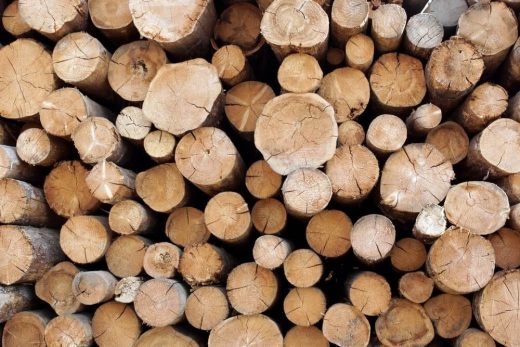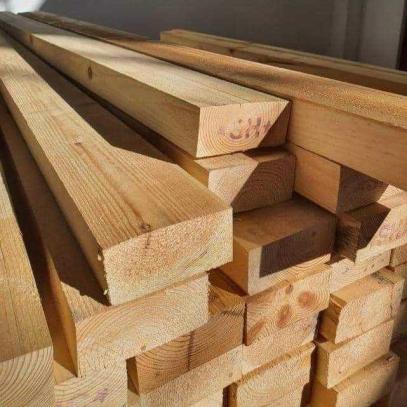What is Wood?
The wood is the most important portion of a stem and a tree. In the tree’s architectural structure, wood serves a variety of purposes. Its primary function is to sustain the tree to remain upright and grow in height. The tree’s height is important because the higher it is, the closer it is to the sun, the more leaves or shoots it produces, and the more sunlight it can absorb and use in the photosynthesis process.
As a result, the trees’ profession or role is related to the tree’s ability to retain food and survive. In addition, the wood helps to transfer minerals and water to the growing tissues and other leaves.

Fig 1: Wood
Courtesy: Good housekeeping.com
Wood is a porous or permeable organic substance found in tree roots, stems, and other ligneous plants. Primary or living matter is a natural compound or composite of muscular cellulose filaments rooted in a lignin template that resists compression. Wood can be described as just the secondary xylem in tree stems, or it can be defined more widely to encompass the same sort of tissue elsewhere, such as in shrub or tree roots.
It performs a hold duty and operation in a breathing tree, allowing woody plants to bulk up or position themselves independently. Wood is used for building; we can make various items that we use in our everyday lives, such as toothpicks, pencils, twigs, sticks, chips, firewood, etc.
Different Types of Wood:
1. Akasa Wood:
Akasa Wood is a type of wood found in Japan. Akasa wood is a type of interior wood used for various purposes. Its heartwood and sapwood kinds. It has a grey-brown tint with a straight texture. The most common applications are interior joinery, light structural work, flooring, utility furniture, plywood veneer, and turnery.
2. Bamboo Wood
Bamboo is moisture resistant and can be utilized as an appearance of a water feature or as flooring in bathrooms, conservatories, and other wet places.
3. Balsa Wood:
Balsa wood is a hardwood that is one of the softest and lightest in weight. Balsa is utilized for insulation heat, sound, vibration, and model making.
4. Ash Wood:
Ash wood is a light wood that glows with a particular brilliance when polished. It has a virtually open grain structure and is fairly durable.
5. Beech Wood:
Beech wood is a strong, resilient wood that comes in various warm, gentle honey tones in its natural state.
What is Timber?
The word timber, in one sense, refers to wood that has yet to be harvested, implying that it is quiet in the form of an uninterrupted and peaceful upright tree with roots in the soil. When a tree is trimmed and separated from its natural structure, the process of altering it into other treated shapes or forms of forest products begins.
A second meaning of the word timber is a wood arrangement that, while not in use. There are times when it is preferable to keep the wood in as close to its natural state as possible to get an exquisite look. As a result, rather than being cut to a specific extent, timbers may preserve greater volume or dimension adjustments that mirror their expansion patterns in this scenario.
So far, there is one additional indication of sound timber causing it to shambles more quickly – and that is vital timber due to its spatial uniqueness. According to a similar description, forests should be no smaller than 5 inches in size.

Fig 2: Timber
Courtesy: Dreamstime.com
Different Types of Timber:
1. Bamboo Timber:
Bamboo is a natural biological tree utilized in the construction of houses.
2. Cedar Timber:
This type of timber is used to make Landscape, park, and garden structures.
3. Birch Timber:
This type of timber is available in yellow, white, and other varieties. The yellow birch is the most common of these.
4. Cherry Timber:
Cherry wood is well-known for its use in tree plantations. There are many different types of cherry wood, but black cherry wood is the most common and the only one with commercial worth.
5. Mahogany Timber:
It is used in practically every continent for commercial purposes. The furniture and cabinet-making industries depend largely on mahogany. It’s used to make plywood and various types of trim. It has a tough grain. Among the regularly used hardwoods, it is one of the softer woods.
Difference between Wood and Timber:
- The term ‘wood’ refers to the material that makes up a tree and helps it transport water and nutrients, where timber is utilized after the tree has been crushed or fallen.
- Wood is a fibrous or elastic substance that comes from plants or flora. The timber is used for rafters, beams, and boards.
- A pencil, toothpick, stick, or similar objects can create the wood substance. Timber is a larger type of wood.
- Wood is used for flooring, trusses, storage containers, plywood, veneers, and logs, among other things. Furniture, firebreaks, beams, various construction purposes, paper pulp, and so on are all made from timber.
- A substance consisting of the middle part of the trunk and branches is employed as a construction material. Forest trees are regarded as a producer of timber.
- Wood is utilized in a variety of ways. Timber is used in the construction and manufacturing industries.
- Wood is a rough material. Timber is a term applied to finished wood.
- Wood is refined, but timber is unrefined wood.
- Wood is just the term for the material that comprises all timbers and logs. Timber begins as a simple wooden log and is transformed into beams, boards, rafter shapes, and other structures.
- The wood substance is sensitive to alkalis and acids. So alkali and acid solutions are utilized for durability. However, the most significant element in choosing a construction material is the durability of the timber. Timber can withstand biological, chemical, and physical agent action, among other things, and carry the load without causing damage to the structure.
- Wood’s hardness ensures it can withstand penetration. In addition, the hardness of timber is determined by its heartwood characteristics and density.
- Timber’s machinability means how quickly cut into the proper form and size. The wood is not easily damaged during saw cutting.
- Wood’s strength denotes its ability to withstand failure, whereas timber does not easily fail, and it should be able to support the load.
- The strength of wood or timber is defined by its color. The dark color of timber denotes strong strength, whereas the light color of timber suggests low strength.
- The thermal conductivity of timber is affected by many parameters, including density, porosity, and moisture content. Various types of wood can withstand fire, but only to a limited extent.
Conclusion:
Wood is the hard, fibrous material that makes up the trunk and branches of trees and shrubs used for fuel or wood. It is a tiny ground region covered in growing trees smaller than a forest. Wood that has been prepared for use in construction and carpentry, trees planted for timber, or a wooden beam or board used in constructing a house, ship, or other structure are all examples of timber.
References:
1. Timber Vs Wood. (n.d.). Timber vs. wood – Designing Buildings. designingbuildings.co.uk/wiki/Timber_vs_wood.
2. Timber Vs. Wood – What’s the Difference? | Ask Difference. (2019, November 25). Timber vs. Wood – What’s the difference? | Ask Difference. https://www.askdifference.com/timber-vs-wood/.
3. What Is Timber? Definition & Types Of Timber & Lumber – Civil Engineering. (n.d.). What is Timber? Definition & Types of Timber & Lumber – Civil Engineering. https://civiltoday.com/civil-engineering-materials/timber/224-timber-lumber-definition-types.
4. What Is Timber? | What Is Lumber? | What Is Lumber Used for? | Lumber Vs Wood | Difference Between Lumber And Timber | Standard Wood Size | What Is Timber Used for? – Civilscoops.com. (2021, August 21). civilscoops.com. https://civilscoops.com/difference-between-lumber-and-timber/.
5. Rajput, K. (2021, May 22). Difference between Timber and Wood | What Is Wood | What Is Timber. Civil Jungle. https://civiljungle.com/difference-between-timber-and-wood/.
If you have a query, you can ask a question here.


